Key Takeaways
-
Expansion of the academic transcript has become more competitive as different models become more accessible, including badges, certificates, competencies, and experiential transcripts.
-
While working groups and national collaboratives work at mapping their commonalities, there is still no consensus on issuing standards, interoperability, or best practices.
-
Elon University launched the Visual Experiential Profile in 2016 to include academic and experiential credits in a single visually rich transcript.
-
Evaluation of experiential engagement and GPA found a positive correlation, reinforcing the wisdom of including all credits in an easily understood visual format to tell each student's unique educational story.
Few topics in higher education have drawn more attention than the expansion of the academic transcript. Over the past five years, the landscape has become increasingly competitive as new models for curricular gains, including badges, certificates, competencies, and experiential transcripts, become more accessible and valuable. Students of all ages now have a considerable range of learning pathways, and the credentials that represent them are many and varied. Of course, all student experiences are not created equal — badges often denote narrow yet related skill sets, while competencies can underpin an entire four-year undergraduate curriculum.
Many commonly discussed examples remain nascent, having emerged from recent technological breakthroughs like the 2013 publication of Mozilla's OpenBadges 1.0 standards. While working groups and national collaboratives work at mapping their commonalities, there is still no consensus on issuing standards, interoperability, or best practices. However, institutional outliers have established expertise in credential extensions, such as Elon University, which continues to refine a comprehensive credential that has existed in some form for over two decades. While the latest iterations are by far the most portable and relevant, the challenges and triumphs of its successive evolutions are instructive, illuminating the needs of students and employers and hinting at future innovation.
The Challenge of Credential Expansion
For many years, stakeholders (e.g. administrators, faculty, and students) have pressured registrars to include more information on the official academic transcript. This has certainly been a challenge for those responsible for maintaining the accuracy and relevance of its data, as adopted changes would impact curriculum management, transfer credit exchanges, degree audits, and, of course, issuing transcripts. Many registrars have resisted the change and struggled to maintain consistency as the market approaches a critical mass of credentials. In doing so, however, they fail to present credential earners and user with useful information.
Jennifer Engle of the Bill and Melinda Gates Foundation captures this situation well, explaining that while data supports the long-term value of attending college in its many forms,
The problem is that prospective students, policymakers, and the public do not have answers to commonsense questions about whether and which colleges and programs offer a quality education at an affordable price.
She substantiates this claim by describing higher education’s infrastructure as "a set of disconnected systems…none of which are able to fully provide the answers we need to pressing questions about student outcomes."1 The data certainly exist in some form at each college and university, but they are not codified in a transparent or transferable way. A common solution among those that address this dilemma at the institutional level is the addition of course attributes that reveal more about the courses students completed. Designations such as "service-learning," "diversity-themed," "online," "hybrid," and "study abroad" are added either directly to the academic transcript or embedded as XML code.
However, many of these institutions will limit expansions of their credentials to the academic domain. Arguments against cataloguing out-of-class experiences include bounds of responsibility ("that's not our area") and technological limitation ("the student information system cannot accommodate this data, and we cannot afford another tool"). Though capturing experiential learning might better suit Student Affairs at a particular institution, registrars can lend their expertise in data collection and organization to improve such efforts. And while student systems have historically restricted our ability to document experiential learning on the academic transcript, universities today often have technologies and skill sets to circumvent traditional limitations.
Institutions with well-developed co-curricular programs often offer co-curricular transcripts that formally summarize students' out-of-class activities. However, because institutions rarely offer academic credit for these activities, the corresponding records are typically produced separately from the academic transcript. While co-curricular transcripts offer employers a unique view of the depth and breadth of student experiences, marketing these transcripts to students can be confusing and operationally cumbersome.
The Power of Campus Culture
At most universities, co-curricular programs are managed within offices responsible for student affairs, engagement, and leadership. These units often house distinct databases that compile information about student activity; for that reason they also often have responsibility for record creation and maintenance. However, a stronger connection between academic and student affairs offices enhances the overall quality of experiential learning and facilitates efficient and effective data collection. For example, while most universities have an internship program, the university that provides context through classroom learning and facilitates the transfer of knowledge from the classroom to the internship will most certainly help students attain new levels of learning. In turn, the curriculum is enhanced as faculty observe students in the workplace applying concepts mastered in the classroom, and they amend the curriculum as needed.
Elon University, a medium-sized private liberal arts institution in the southeast, has championed the importance of experiential learning for over 20 years. Central to its mission are community-wide commitments to "active student engagement" and putting "knowledge into practice." Accordingly, the university offers deep structural support for what are now known as high-impact practices, which include mentorship, reflection, and record-keeping.2
Leadership in developing academic connections to experiential learning is a central tenet of Elon's approach to high-impact practices. In 1993, the faculty added one unit (versus a class) of experiential learning to the university's core curricular requirements. In 2013, faculty voted to double that requirement as a response to internal assessments indicating that students who had only completed one unit of experiential learning were three times less likely to have secured employment by graduation than students who obtained more. In the current higher education landscape, connecting the strength of a liberal arts education to employment and acceptance to graduate school is critical to a university's success.
Each of Elon's five key experiential program areas is coordinated by a professional staff member in collaboration with a faculty development fellow. Together they recruit faculty and staff with related expertise to implement, integrate, and document the experience. For example, global education is coordinated by the dean of the same area and a senior faculty member who has extensive experience in developing study abroad courses and intercultural competencies. The faculty member develops expertise among other faculty who are interested in teaching abroad and conducts regular workshops. Along with global education, the service, internship, and leadership areas use this collaborative model. The fifth area, undergraduate research, is coordinated entirely by faculty, and a faculty member serves as its director.
Experiential learning is further strengthened by the contributions of the Experiential Education Advisory Committee (EEAC), which includes the director of the core curriculum, the administrator of a scholarship program dedicated to funding experiential education, and members of the other offices responsible for administering experiential learning requirements. The associate provost for Academic Affairs chairs the committee, and the EEAC monitors learning outcomes. The EEAC also participates in regular assessment of Elon's core curriculum.
These activities align with the eight conditions later identified by Kuh and Ken O'Donnell as critical components of connecting high-impact experiences with knowledge to create desired learning outcomes in higher education.3 The eight conditions include
- Performance expectations set at appropriately high levels;
- Significant investment of time and effort by students over an extended period of time;
- Interactions with faculty and peers about substantive matters;
- Experiences with diversity; frequent, timely, and constructive feedback;
- Periodic and structured opportunities to reflect and integrate learning;
- Opportunities to discover (and, elon believes, to confirm) relevance of learning through real-world applications; and
- Public demonstration of competence.
The university revisits standard expectations and processes for experiential education whenever new experiential opportunities arise. Faculty and professional staff may propose experiences not encompassed by the five existing experiential areas; the advisory committee approves these on an individual basis. To illustrate the strength of experiential education, an annual report of participation is produced and shared with faculty and staff. This report is also featured on Elon's website and in the university's admission materials.
As illustrated by this report and other publications, over the past two decades Elon has seen considerable growth in student participation in experiential education (in contrast to the national trend Kuh identified4). While Elon has endeavored to expand experiential education, participation in high-impact experiential practices nationwide has remained constant over the past few years, with only service learning experiencing modest growth.5 This largely results from the centrality of experiential learning to Elon's campus culture. Participation is a collective expectation, opportunities are interwoven into academics and social engagement, and its representative degree requirement is maintained by a standing committee of faculty and staff to ensure variety, accessibility, and equity.
The Elon Experiences Transcript
To lend credibility to these out-of-class experiences, the university launched the original Elon Experiences Transcript (EET) in 1994. Though experiential learning had not yet become an institutional expectation, the university nonetheless regarded it as an important component of the undergraduate experience, and administrators decided to offer students a record of their accomplishments. This first incarnation was unsophisticated in form and function: it was printed on letterhead, and experiential data collection was ill-defined. For the first half of its existence, the EET was maintained by the Office of Student Life and could only be acquired in person.
During an accreditation review in 2002, university faculty approved the official incorporation of co-curricular learning into the undergraduate curriculum by adding a standard experiential learning requirement (ELR) to all major programs of study. The decision was inspired by a collective desire to strengthen real-world connections to academic learning, largely predicated on the university's developed expertise in the area. In complementary fashion, the university also created the EEAC to guide the incorporation and consequent expansion of the ELR.
During the same accreditation review, Elon administrators improved the EET by adopting policies and processes to streamline data collection and decentralize responsibility for vetting experiences. As a result of these material and functional improvements, the transcript became more meaningful (see figure 1) and Student Life reported an uptick in student requests.
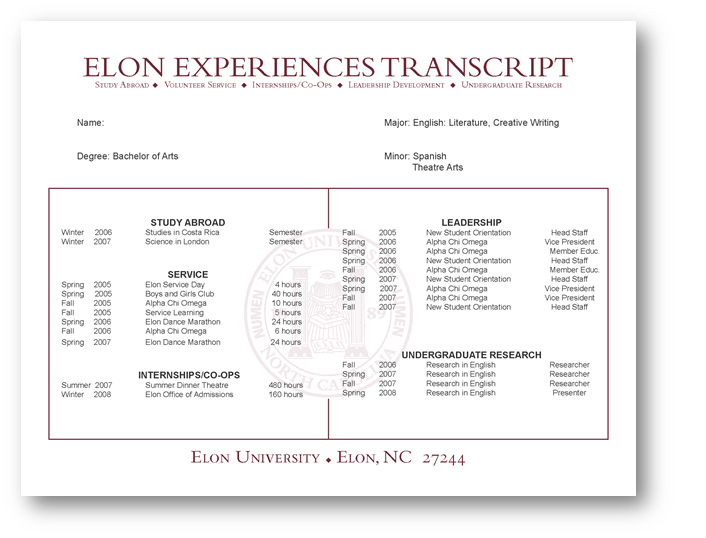
Figure 1. The improved experiences transcript, developed 2002
Once the ELR was added to the core curriculum, undergraduate students were required to engage in experiences outside of the classroom to earn a degree. Experiences that satisfy this requirement fall into five categories: global education, service, leadership, undergraduate research, and internship. Each category boasts a variety of opportunities for student engagement, with each experience supervised by one or more faculty mentors. Participation exposes students to concepts, theories, and methods that complement and synthesize with academic learning, and mentors help them make connections between the two. The combination can be transformative, producing graduates who can think critically and solve problems based on prior experience.
In 2012, Elon administrators realized that they had missed an important opportunity by not making the EET available to academic advisors, career advisors, and faculty, each of which plays a critical role in shaping the undergraduate experience. By expanding access to the EET, administrators granted these stakeholders the ability to track students' experiential progress like their academic progress — the full university experience — online. The traditional advising session transformed into a comprehensive conversation that further clarified the purpose of the experiential transcript. Juxtaposed with its academic counterpart, it became clear that the experiential transcript had significant potential for revealing an undergraduate's story. It was unique to each student, could hold more types of data, and used variable metrics (accumulated hours, locations, participation frequencies) instead of grades. At this point in its history, the experiential transcript was again ripe for development, whereas changes to the academic transcript would be perceived as risks to its long-term integrity.
Envisioning a New Direction for the Experiential Transcript
As co-author Rodney Parks noted in University Business, "Students should not have to go multiple places to obtain documents that paint a full picture of their academic experience."6 In response to administration's concerns about the record's visibility and accessibility (which would align with and support the institution's promotional initiatives), Elon decided to bridge the distribution gap between the EET and the academic transcript by launching a new ordering system and redesigning it to correspond with the academic transcript (see figure 2). In the new system, students could opt in to receive a copy of the EET along with their academic transcript at no additional cost. Once this revision launched, the number of official EET requests increased from three in 2012 to 727 in 2013. During fall 2013, Elon partnered with Parchment to combine the two transcripts into one certified PDF document.
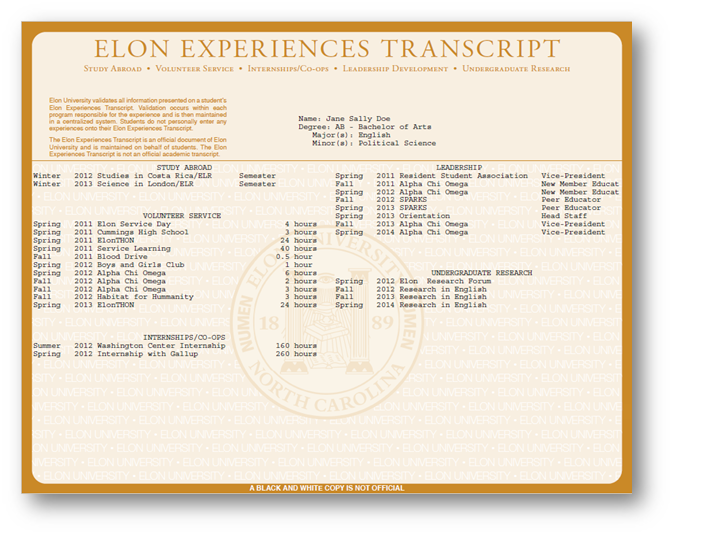
Figure 2. EET redesigned to correspond with the academic transcript
This combination saw significant success, as it drew the attention not only of Elon students and alumni, but also peer institutions and other credential issuers. This innovation ultimately led to Elon's selection in 2015 as one of eight original institutional members of AACRAO and NASPA's Comprehensive Student Record Project. The year-long project, funded by the Lumina foundation, was launched to support the "innovative work of institutions crafting new approaches to the document" to "reflect and verify the diverse experiences of today's student population." Elon University's proposal was a new version of the EET, one that would feature infographics instead of lines of text. After a year of planning and programming, Elon launched the two-page Visual Experiential Profile (Visual EXP) to the graduating class of 2016. The first page of the new transcript (figure 3) provides a summary of experiences and a timeline, and the second page (figure 4) features graphics for each of the five co-curricular experiences that Elon tracks.

Figure 3. Visual EXP with summary and timeline
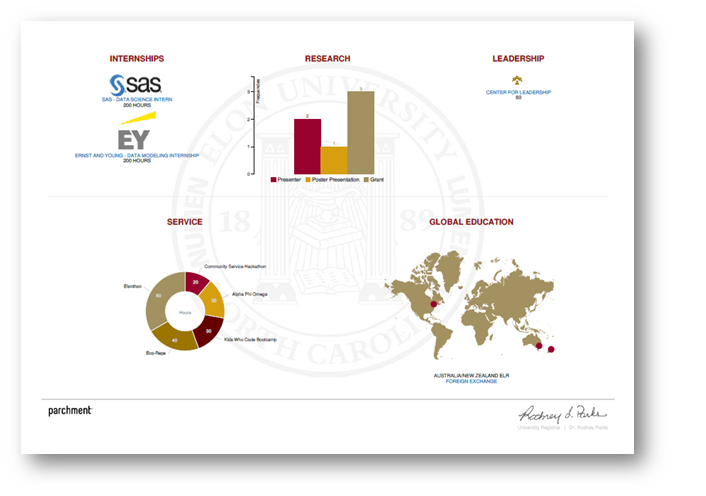
Figure 4. Visual EXP with graphics for co-curricular experiences
The Visual EXP was added to the Parchment storefront along with Elon's other credentials so that students could order it independently or combined with the original academic transcript. During launch, the Office of the Registrar sent communications to the class of 2016 encouraging them to post the visual transcript to LinkedIn with their certified electronic diploma (figure 5).
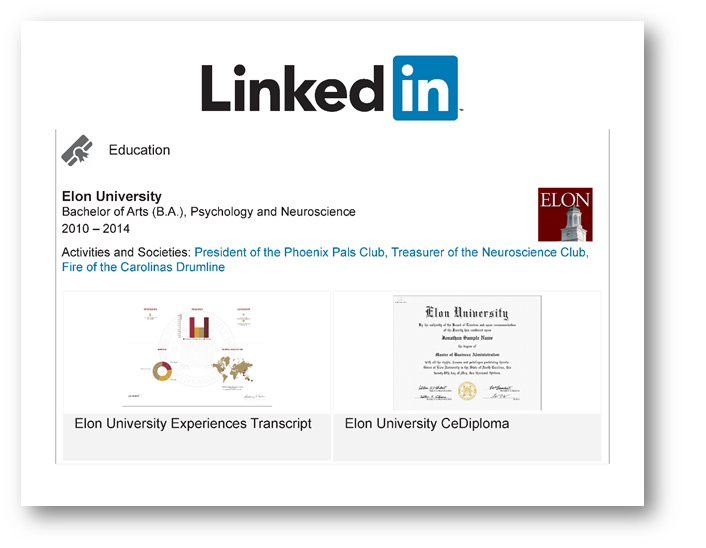
Figure 5. LinkedIn posting of the Visual EXP and certified electronic diploma
In November 2016, Elon began to embed artifacts into the Visual EXP to give potential employers the ability to see more of a student's comprehensive four-year experience. Artifacts can include published research papers, internship descriptions, a description of a service organization, a list of duties for a leadership position, or a reflective writing sample following a global education experience. Essentially, the new Visual EXP serves as an anchor for students' storytelling without requiring them to maintain it. As one student put it, "It's amazing to look back at my Visual EXP to see how much I've done throughout my time at Elon. Without this record, I would have completely forgotten about certain experiences."
The artifacts that represent the culmination of these experiences are embedded into the transcript as links or additional layers of content, so employers can determine the level of detail at which they prefer to appraise graduates. Some recruiters desire brevity, while others take a more meticulous approach. Importantly, the same credential serves the needs of them all. In response to a survey to 140 employers about the Visual EXP, 63 percent suggested that leadership position descriptions be included in the transcript. Over 50 percent called for the inclusion of learning outcomes and internship information as well.7 Though these preferences obviously do not reflect the wishes of all employers, clearly the mere availability of these artifacts will be a boon to the recruitment and hiring process. These results might portend a paradigm change in higher education, as competency-based education and skill-based learning frameworks gain visibility and are adopted by more colleges and universities.
Mining Co-Curricular Data
Concurrent with its studies of the Visual EXP's utility among employers and admissions officers, Elon's Office of the Registrar is also exploring how students engage in experiential learning opportunities over time. Storing experiential data alongside academic data in a central database allows for the creation of student profiles. When aggregated, these profiles can help administrators identify experiential pathways that reveal useful insights about student engagement and outcomes. For example, the Sankey Diagram in figure 6 presents a view of students who participated in a leadership experience. The items along each path are subsequent experiential milestones that students in this cohort accumulated throughout their academic careers, and the width of each link indicates the number of students who followed that specific path.
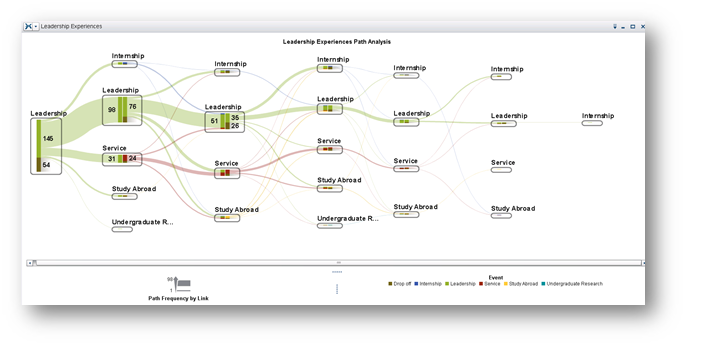
Figure 6. Sankey Diagram for the leadership cohort and subsequent experiential milestones
Using this data, coordinators of each experience on campus can encourage students to follow well-worn pathways with reliable outcomes, connecting them with successful students from earlier cohorts. The most common paths can be distilled from the larger data set for a closer look at specific co-curricular choices. Figure 7 presents a view of individuals in the top 10 most frequent experiential paths from the same cohort as above (each color indicates a unique path). Alternatively, coordinators or mentors can encourage students to engage in uncommon sequences that better suit their academic goals with the knowledge that they may require additional support.
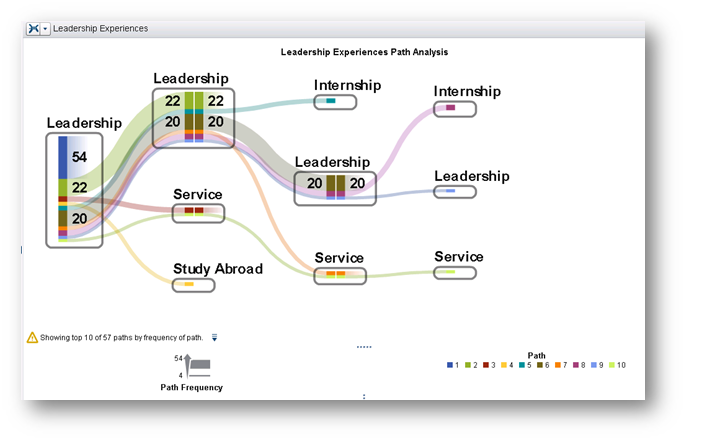
Figure 7. Most frequent experiential paths for the leadership experience cohort
This data can be mined in myriad ways to assess the depth, breadth, frequency, and impact of out-of-class engagement. For example, as a predominantly white institution (PWI), Elon carefully monitors the recruitment, retention, and engagement of its minority students. After isolating an undergraduate cohort, cross-analysis reveals trends in experiential engagement among demographic subpopulations. Figure 8 shows normalized four-year rates of participation among majority and minority students from the 2012 first-time, first-year undergraduate cohort.
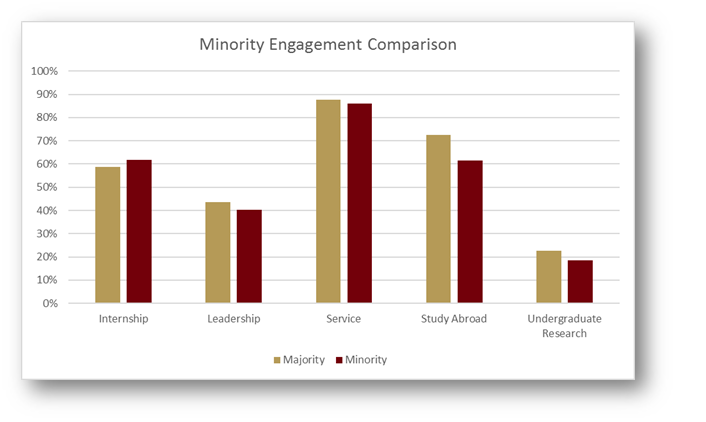
Figure 8. Normalized four-years rates of experiential engagement by demographic
A more exoteric metric is GPA. Institutions are wont to encourage out-of-class participation, but not at the expense of academic progress. It follows that administrators would want to know the correlation between the frequency of experiential engagement and cumulative GPA. Figure 9 presents this correlation, revealing that (at least in this cohort) students with a higher number of experiences tend to have higher GPAs as well. Though still in a nascent phase of development, the rich information gleaned from this type of data analysis has powerful implications for institutional support structures like Academic Advising, whose staff members at Elon incorporate transcript extensions into conversations with students. Becky Olive-Taylor, associate dean of Academic Support and Advising, noted that
"Access to a student’s [experiential transcript] from the moment something appears on it until graduation is key to helping students consider how they are going to tell their story to employers and graduate schools. For the experienced academic advisor, the EET is another part of their toolkit when working with students. For new academic advisors, it is indispensable in that it provides a shared, concrete frame of reference to discuss adding meaningful co-curricular activity to a student’s undergraduate education."
If equipped with aggregated, longitudinal data about out-of-class engagement across a variety of categories and characteristics, advisors will have the requisite knowledge to engage in more fruitful one-to-one conversations with their students. Their recommendations for experiential additions become more targeted and reliable, and students’ understanding of curricular-professional alignment improves.
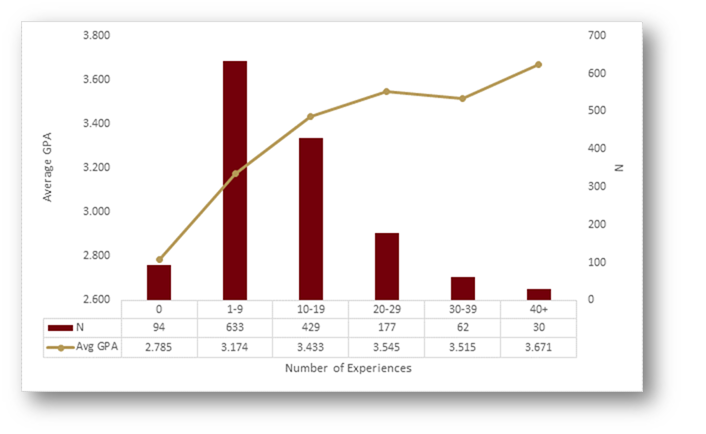
Figure 9. Correlation between experiential engagement and GPA
Change on the Horizon
The credentialing ecosystem in the United States continues to evolve. Institutions and collaboratives continue to create, refine, and replicate credentialing models of increasing complexity and interconnectedness, with standardization among these new credentials yet to emerge. Registrars must work with the offices of Student Life and technology support to evaluate their suite of credentials against those offered by peers and industry exemplars. As employers voice their opinions concerning the lack of information available on the academic transcript, institutions should update their records accordingly to ensure they continue to satisfy the needs of students and other stakeholders.
As data stewards of the entirety of the student population's academic data (including graduation requirements that may include co-curricular learning), the registrar possesses in-depth knowledge of the institution's linear and latticed learning pathways, common curricular challenges, and long-range enrollment patterns. Because they also orchestrate each term's master course schedule and liaise with a wide range of academic and administrative departments, registrars possess a unique perspective of the intersection between curricular and co-curricular learning. Campus registrars are therefore well-positioned to lend expertise to campus committees and to help expedite the implementation of new credentials, their complementary technologies, and data mining techniques.
Additionally, with an increasing array of credentials available from education providers across the country, administrators should expect to see new technologies designed to bridge the gaps between job seekers, students, workers, and employers. Projects underway, like Credential Engine's WorkIt, will allow learners to search for and compare credentials. Similarly, employers may soon be able to search for students based on a set of skills validated by a credential issuer, rather than relying on an academic transcript that simply lists courses taken. Imagine universally accessible systems that document lifelong learning regardless of pace, practice, or sponsor. Elon's Visual EXP will be joined in short order by many innovative credential extensions, as well as larger systems that accommodate their exchange. It is incumbent on registrars and other administrators to prepare for these changes, as their students will expect to receive credentials that tell their entire story.
Notes
- Jennifer Engle, "Answering the Call: Institutions and States Lead the Way Toward Better Measures of Postsecondary Performance," Bill & Melinda Gates Foundation, 2016, 7.
- George D. Kuh, High-Impact Educational Practices: What They Are, Who Has Access to Them, and Why They Matter (Washington, DC: American Association of Colleges and Universities, 2008).
- George D. Kuh and Ken O'Donnell, Ensuring Quality and Taking High-Impact Practices to Scale (Washington, DC: American Association of Colleges and Universities, 2013), 8.
- Kuh, High-Impact Educational Practices.
- Kuh and O'Donnell, Ensuring Quality and Taking High-Impact Practices to Scale, 5.
- Nancy Mann Jackson, "It's Electric: Getting Started with E-Transcripts," University Business, July 23, 2014.
- Jesse Parrish, Jack Fryer, and Rodney Parks, "Expanding the Academic Record: Revolutionizing Credentials for Today's Employers," NACE Journal, February 1, 2017.
Rodney L. Parks, PhD, is university registrar, Elon University.
Jesse Parrish is assistant registrar for Communications, Elon University.
© 2017 Rodney L. Parks and Jesse Parrish. The text of this article is licensed under Creative Commons BY-NC-ND 4.0.
